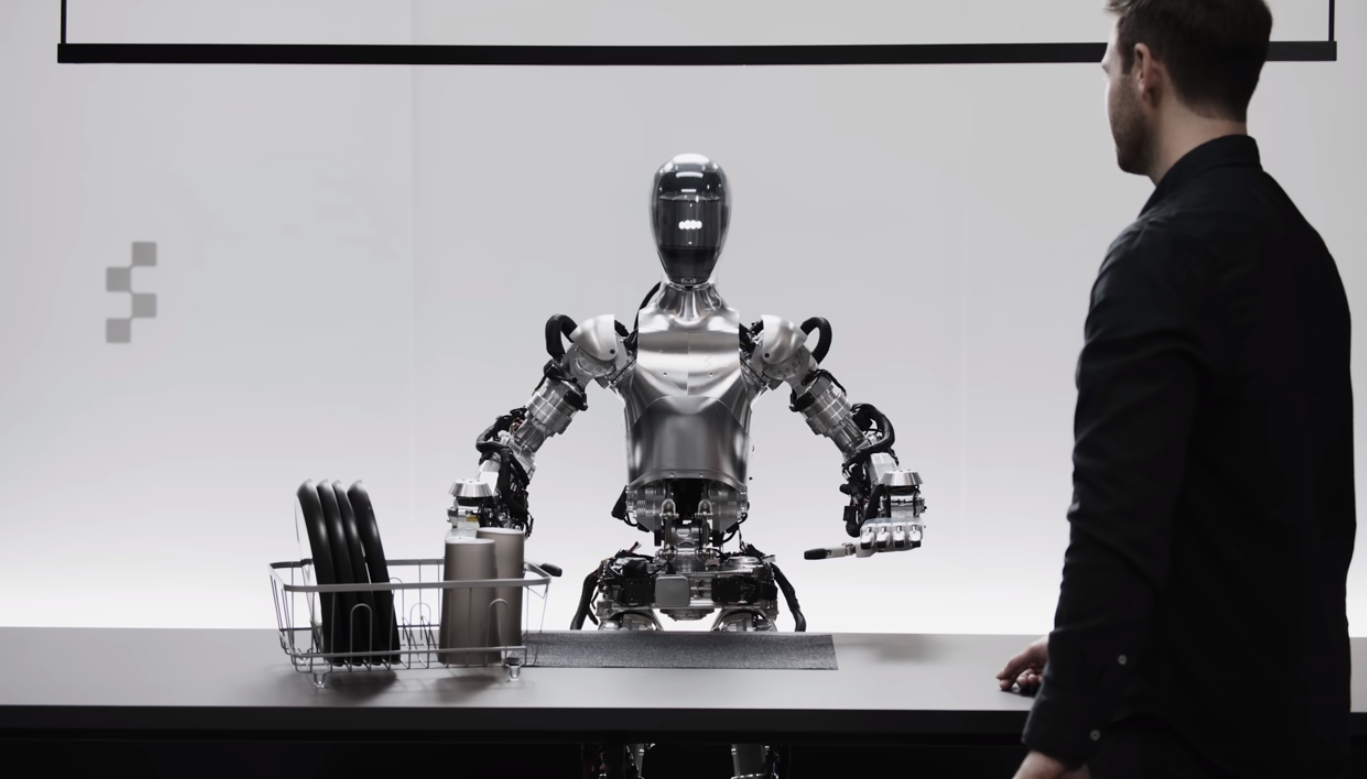Artificial intelligence (AI) in robotics is changing the game. The field of AI and robotics engineering are two spotlighted sectors of research today, as they enable things we considered possible only in science fiction.
For instance, can you imagine going about your day together with a personal AI robot assistant?
While they still have rooms for improvement, these humanoid AI robots are starting to appear in diverse industries. The fusion of AI and robotics is relatively novel, but it is rapidly gaining traction for their synergy.
Today, AI in robotics are enabling robots to understand human speech, detect emotion, and help them learn from their mistakes.
In this article, we’ll look at some of the best examples of AI in robotics that harness different advanced technologies.
Figure 01 – Figure
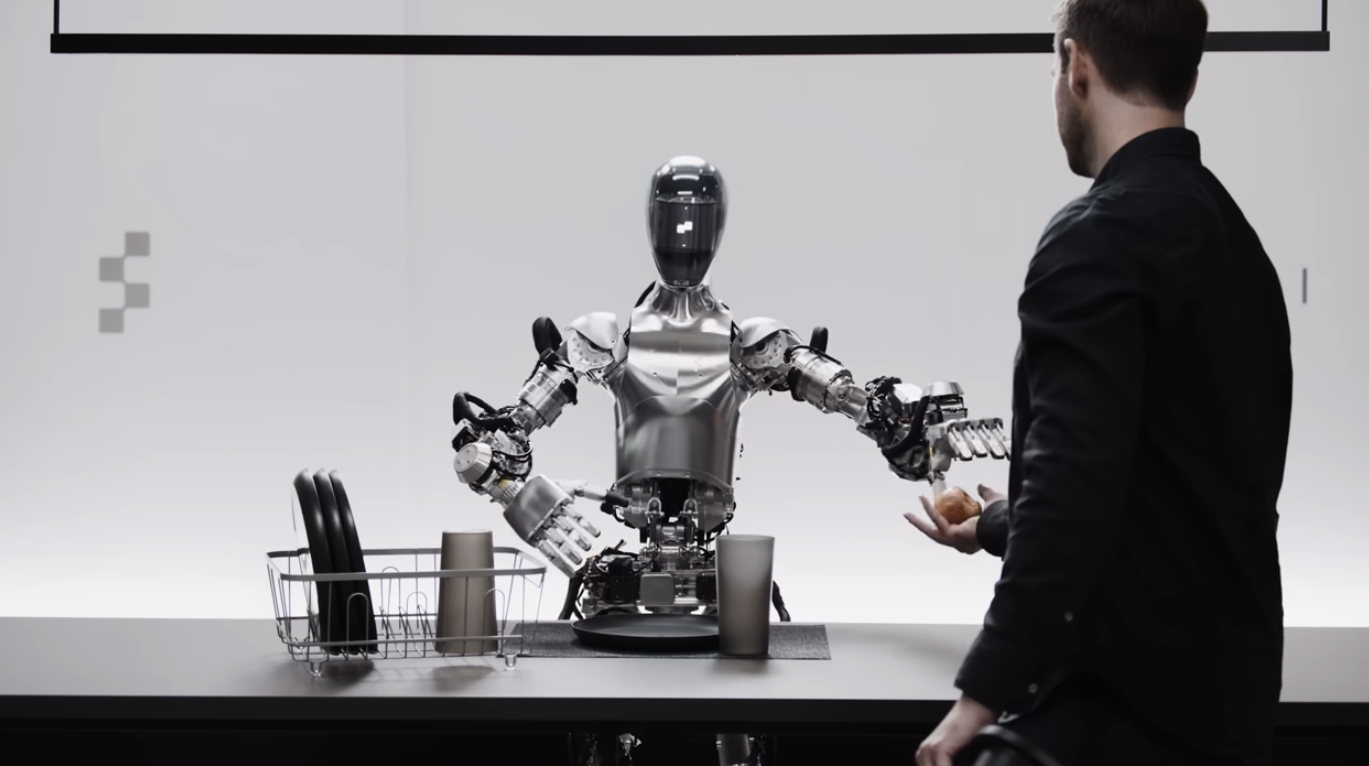
Just few days ago on March 13, robotics startup Figure released a powerful demo video of Figure 01, a humanoid equipped with OpenAI’s language model. The way it could hold a conversation with a person in complete sentences and execute various tasks using its limbs looks straight out of a science fiction film.
In the demo, Figure 01 hands the man an apple upon being asked to pass him “something to eat.” This is a complex combination of tasks that demonstrates advanced object recognition capacity, inference skill, and decision-making abilities to carry out the right action sequences.
Another surprising feature of Figure 01 is that it seems like it can stutter, just like humans do. It’s speculated that this is for the robot to gain some time for inferencing.
Figure 01 is a culmination of some of the most advanced AI and robotics technology so far developed. According to Figure’s website, its mission is to “expand human capabilities through advanced AI.” More specifically, it aims to address millions of unfilled jobs in the United States alone, including tasks that are manual or undesirable tasks for people.
ATLAS and SPOT – Boston Dynamics

Developed by Boston Dynamics, a robotics research group Hyundai Motor Group acquired in 2021, Atlas is recognized as one of the most technologically advanced humanoids today.
Atlas can jump, dance, and even do a backflip. Humans can do these movements with a little bit of practice. However, they are notoriously difficult for robots to execute because of the balance it requires.
Spot, Atlas’ canine counterpart, exhibits high motor skills too. Currently, Spot is on the move in certain industry projects as it collects relevant data and inspect areas.
Atlas boasts fine motor skills, so it’s exciting to look forward to the possibilities it will open if it harnesses advanced AI technologies. In fact, Boston Dynamics is proactive in making these possibilities happen. They have built a research center in Europe, following their headquarter facilities in the United States, to further their research capacities.
OceanOne – Stanford Robotics Lab
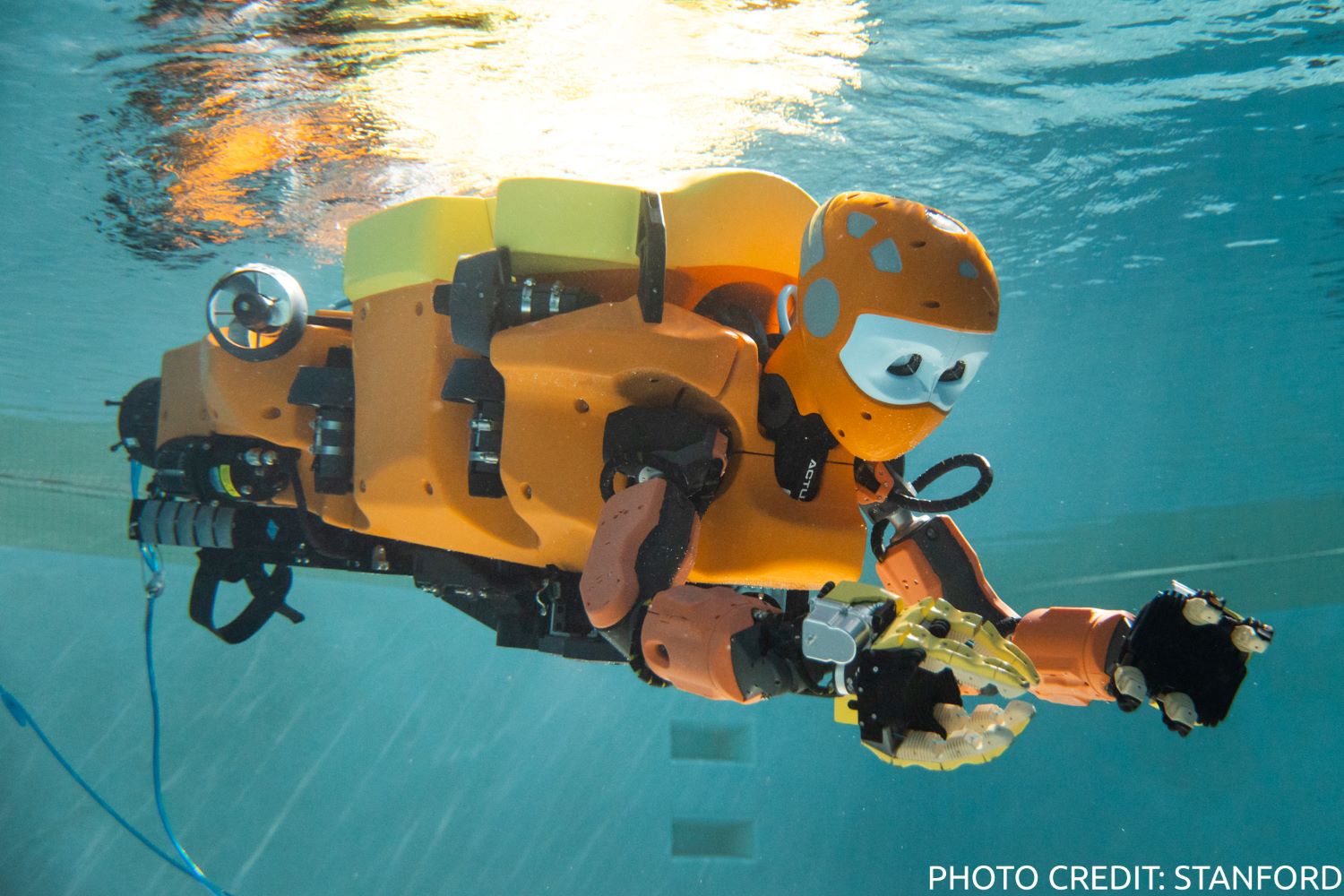
OceanOne is a humanoid robot that dives underwater. Its build specifically caters to underwater exploration.
The first mission OceanOne carried out in 2016 was to explore “La Lune,” the ship of King Louis XIV that sunk along the Mediterranean ocean near France in 17th century. Many shipwrecks, like the case of La Lune, behold lost invaluable treasures and heritage, including artworks and historic artifacts.
OceanOneK, one of the latest versions of the humanoid diver, can withstand exploring 1,000 meters below water level. In addition, it leverages AI technologies like haptic feedback recognition and also various tools.
Eve – 1X
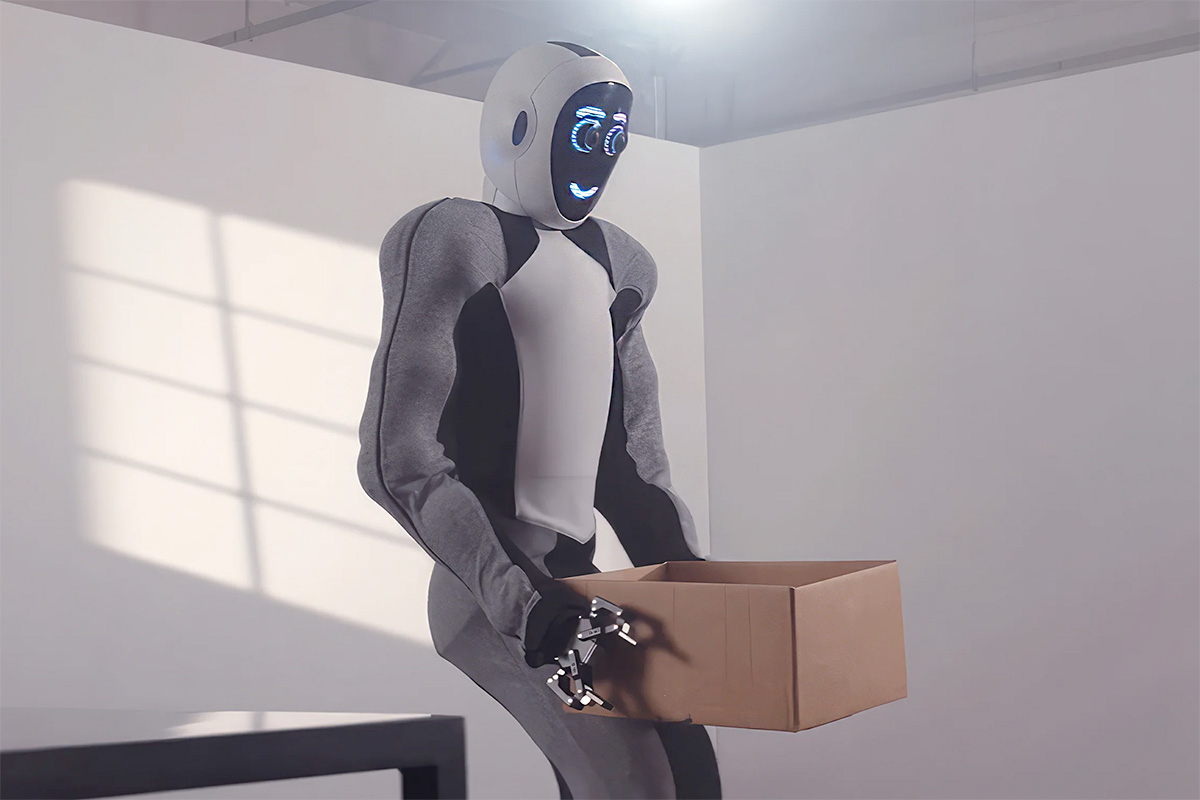
The OpenAI-backed robotics startup 1X developed Eve, a humanoid AI robot that’s garnering attention from in and out of Norway where the startup is based.
Eve is noted to be the first case where a humanoid robot is deployed in a real-life industrial application.
This cool instance of AI in robotics boasts strong grip in its hands, a built-in camera which enables a panoramic view, as well as wheels to carry it around. Nonetheless, Eve’s greatest feature is that it harnesses advanced machine learning capacities. With it, Eve can continuously learn new task and even learn from its own mistakes.
By combining cutting-edge AI and robotics technology, X1 aims to assign Eve in more industry applications, including distribution, transportation, and even security.
Smart Home AI Agent – LG Electronics

LG Electronics is a South Korean company behind Smart Home AI Agent, an adorable semi-humanoid AI robot.
This AI Agent can follow users around using its wheel to assist the latter do their daily tasks. With the AI technology embedded in its system, it collects data from its surroundings, including voice, sound effects, and images. It then uses these data to tailor user experiences.
Together with these AI-backed information, the pet robot can alert its user when the food is ready or the laundry wash is good to go. It can even greet its user when they return home. It’s a great example where an emotionally sensible AI technology can synergize with robotics to cater to our daily needs.
Ballie – Samsung Electronics
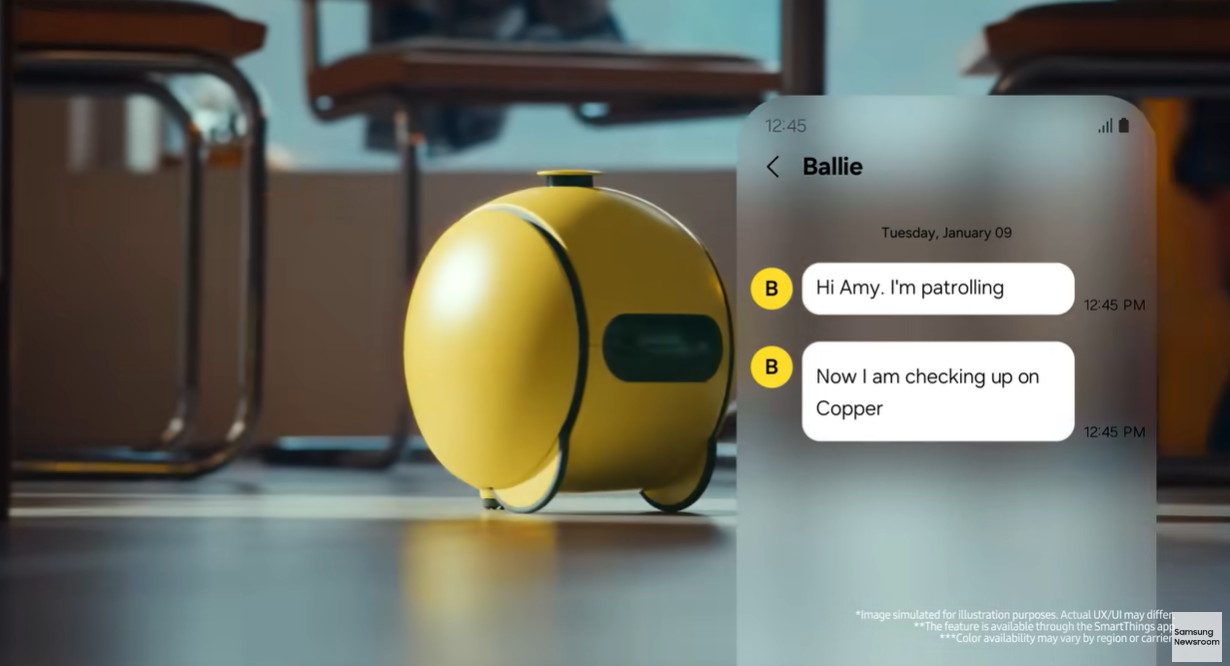
Ballie, with its namesake round feature, can follow its user around to carry out diverse sets of tasks. Developed and presented by Samsung Electronics, Ballie attracted a lot of attention among visitors at CES 2024 for its practicality and appealing design.
Some of the tasks this robot assistant can perform include answering questions from recipes and weather to the user’s personal to-dos. Additionally, its AI customization features enable it to monitor and take care of children and pets, making it a great example of AI robotics that can live alongside people.
AI in robotics: What will it take until commercialization?
Robotic engineering has always been a highly anticipated field of study. And with the rapid development of AI taking place, the engineering field is budding with greater potential.
AI robots can be useful in helping humans carry out daily tasks. In addition, they are also expected to be crucial in research and development areas. This is because they can inspect spaces that are too narrow for humans or some bigger machines to explore, as well as dangerous areas like cliffs or chemically active spaces.
While AI and robotics both garner a lot of attention, there are still shortfalls in each field. AIs still have difficulties recognizing human speech amid noises. Partly for this reason, a big portion of ongoing AI research focuses on natural language processing capacities. NLP enables AIs to process the diverse variations, sentiments, and logic present in human languages. These aspects are important in addressing the safety and inclusivity concerns for AI robotics.

Additionally, embodying physical characteristics of humans is another high mountain to climb for robotic engineering. For instance, areas like hands and other limbic joints have complex mechanisms. Even after developing robots that can delicately mimic these human qualities, the next assignment would be to find a way to commercialize them with lower cost.
Wrapping up…
AI in robotics is a blooming field of study that has a great potential to make our lives better.
In advancing these systems powered by AI, high-quality data is indispensable. Together with a 14 million crowdsourcing data platform, Flitto DataLab is a dedicated partner in scaling these AI systems the right way. We are excited to be a part of how these exciting developments become reality.
